Sports injuries are an unfortunate reality for many athletes, affecting those at all skill levels, from weekend warriors to elite competitors. These injuries are often linked to poor posture, which can put excessive strain on muscles, tendons, and ligaments, and increase the risk of dysfunction throughout the body.
Common injuries include sprains and strains, rolled ankles, rotator cuff injuries, labrum tears, meniscus injuries, and repetitive strain injuries. With an osteopathic approach, these conditions can be effectively managed by correcting dysfunctional joints, restoring connective tissue tone, and realigning biomechanics to support the body’s healing processes.
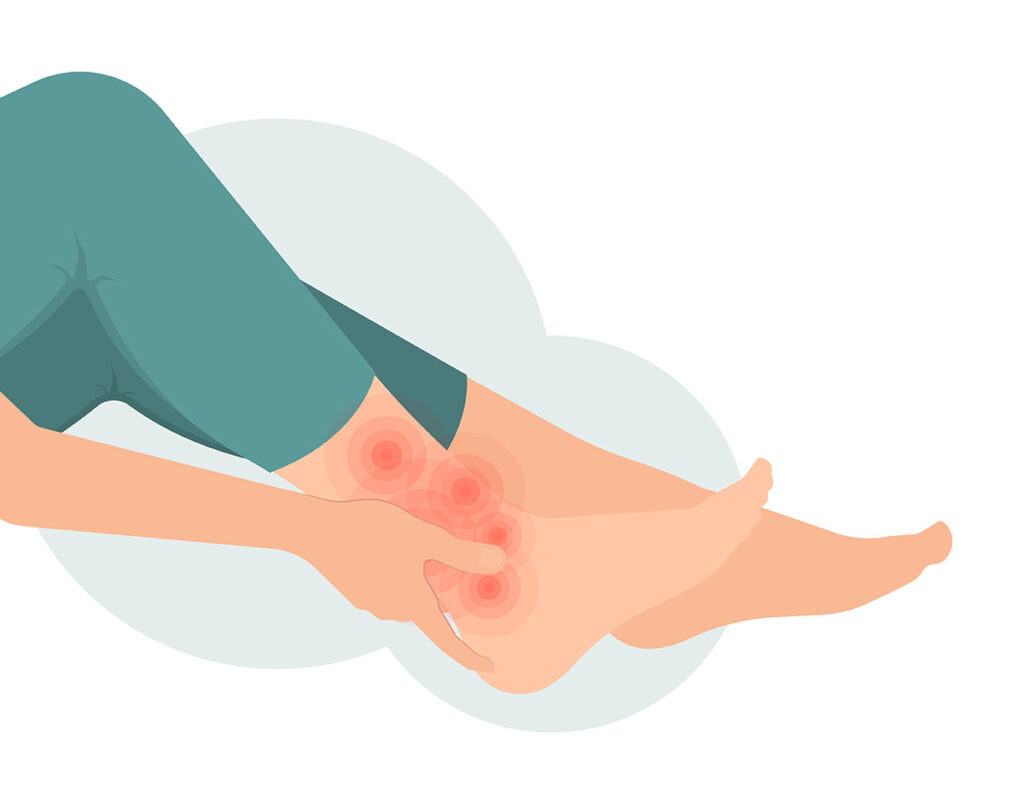
Poor posture can stem from prolonged sitting, incorrect alignment during activities, and muscle imbalances that develop over time. These postural habits can alter the body’s natural alignment and biomechanics, making certain joints and muscles more vulnerable to injury.
For example, slouched shoulders or a forward head posture can increase the strain on shoulder muscles, predisposing individuals to injuries like rotator cuff strains. Osteopathy, with its focus on holistic alignment and balanced body function, is uniquely positioned to address postural issues that contribute to sports injuries.
– Causative Factors: Sprains involve ligament injuries, while strains involve muscles or tendons. Both types of injury can be triggered by poor posture, which places uneven stress on ligaments and muscles, especially during sports. Overstretched or weakened tissues are more susceptible to tearing when exposed to sudden movements, such as those encountered in soccer, basketball, or running.
– Signs and Symptoms: Swelling, pain, bruising, and limited range of motion are common symptoms. Strains often come with muscle spasms and localised tenderness, while sprains may result in joint instability.
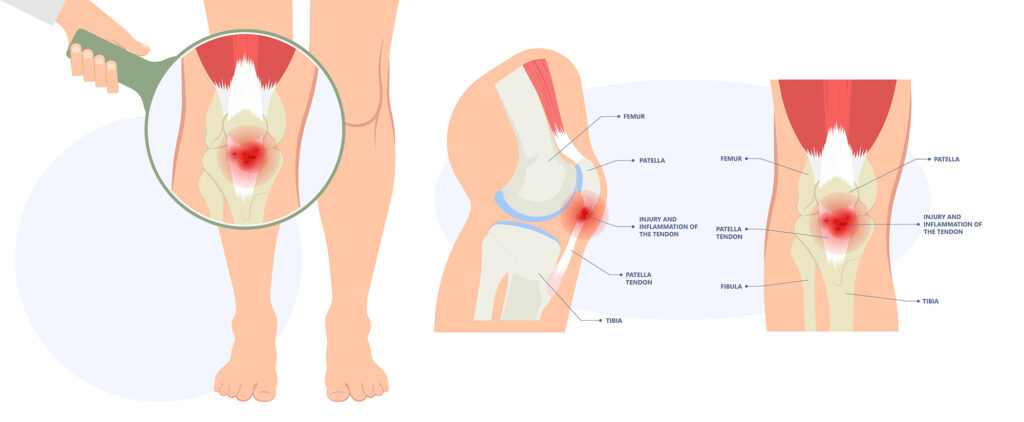
– Contributing Structures: Muscle imbalances and joint dysfunction can lead to tight or overstretched muscles and ligaments, making them vulnerable to injury. For example, tight hip flexors and weak glutes, often associated with poor posture, increase the likelihood of a lower-body strain.
– Treatment with Osteopathy: Osteopaths address the root cause by correcting dysfunctional joint alignment and reestablishing the resting tone of affected connective tissues. Manual techniques, like soft tissue manipulation and joint mobilisation, can relieve strain on affected areas, improve blood flow, and enhance tissue repair.
– Causative Factors: Rolled ankles, or ankle sprains, typically occur when the foot twists inward, stretching or tearing the ligaments on the outer side of the ankle. Poor posture, especially in the hips or lower back, can affect balance and gait, predisposing individuals to ankle instability.
– Signs and Symptoms: Symptoms include sharp pain, swelling, and bruising around the ankle, accompanied by difficulty bearing weight on the affected leg.
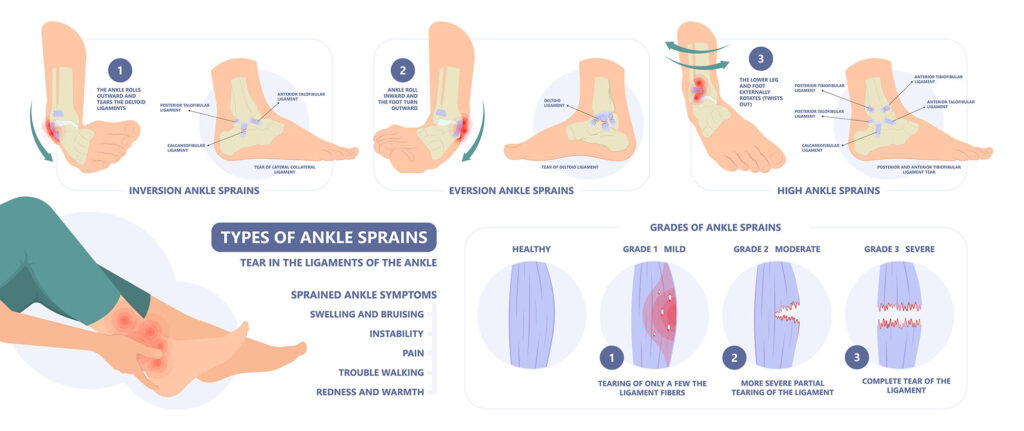
– Contributing Structures: Dysfunctional joints in the lower back, pelvis, and hips can cause abnormal gait patterns and foot positioning, making it easier to roll an ankle. Overpronation, a common consequence of postural imbalances, increases the strain on ankle ligaments.
– Treatment with Osteopathy: Osteopaths can improve balance and correct lower body alignment to reduce the risk of future ankle injuries. Techniques may include joint manipulation of the ankle, knee, and pelvis to restore proper function and biomechanics. Additionally, strengthening exercises and balance training help stabilise the ankle and reduce the likelihood of recurrence.
– Causative Factors: The rotator cuff is a group of four muscles that stabilise the shoulder joint. Repeated overhead motions, often seen in sports like tennis and swimming, can strain these muscles. Poor posture, such as rounded shoulders and forward head positioning, adds strain to the shoulder, increasing the likelihood of injury.
– Signs and Symptoms: Pain in the shoulder, especially during overhead activities, weakness, and limited mobility are common. Persistent cases may experience nighttime pain or even shoulder instability.
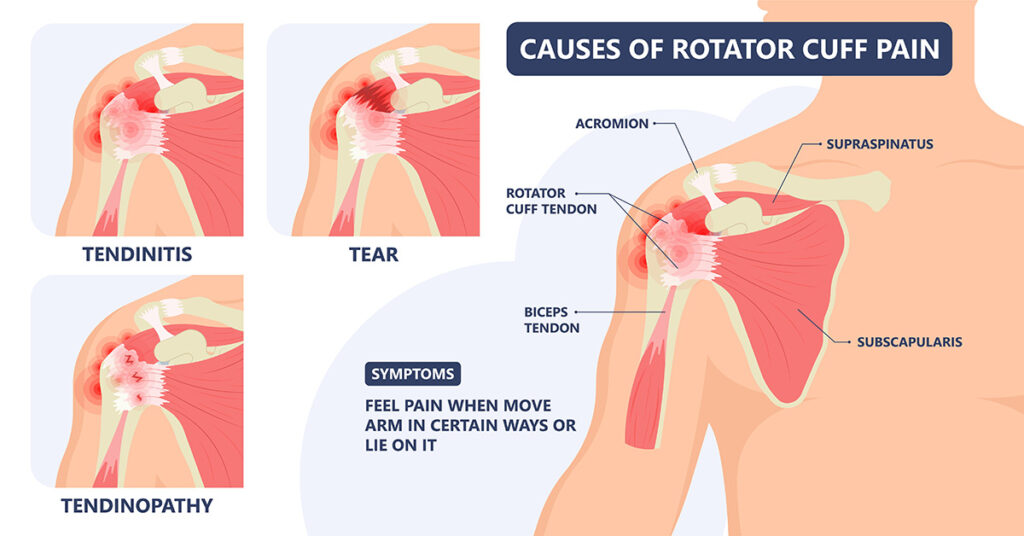
– Contributing Structures: Dysfunctional scapular movement and upper back misalignments contribute to excess strain on the rotator cuff, impairing shoulder biomechanics. Weakness in supporting muscles can overload the rotator cuff, causing inflammation or tearing.
– Treatment with Osteopathy: Osteopathic treatment focuses on correcting postural misalignments and restoring proper scapular motion. Techniques to release tension in the upper back, neck, and shoulder girdle are essential for supporting rotator cuff function. By balancing the surrounding muscles, osteopathy helps improve shoulder alignment, promoting optimal biomechanics.
– Causative Factors: The labrum is a ring of cartilage that surrounds the shoulder socket, providing stability. Tears can result from repetitive shoulder use or acute trauma, like a fall. Rounded shoulders and a forward-leaning posture can put extra pressure on the labrum, making it more vulnerable to tears during strenuous activity.
– Signs and Symptoms: Deep shoulder pain, catching or locking sensations, and instability are common symptoms. Some individuals may also experience reduced shoulder range of motion.
– Contributing Structures: Postural misalignment affecting the shoulder girdle and upper back leads to abnormal forces across the labrum. Limited mobility in these areas further compromises shoulder stability, increasing tear risk.
– Treatment with Osteopathy: Osteopathic care aims to restore scapular mobility and strengthen surrounding muscles to support the shoulder joint. By addressing the underlying postural imbalance, osteopaths reduce the stress placed on the labrum, helping to prevent further damage. Specific manipulations and rehabilitative exercises support recovery and reduce the likelihood of reinjury.
– Causative Factors: The meniscus, a cartilage pad in the knee, absorbs shock and stabilises the joint. Twisting motions, common in sports like soccer and basketball, are primary injury causes. Poor posture, particularly in the hips and pelvis, can alter knee alignment and increase the strain on the meniscus.
– Signs and Symptoms: Symptoms include knee pain, swelling, limited range of motion, and difficulty fully extending the knee.
– Contributing Structures: Hip and pelvic misalignments contribute to poor knee biomechanics, stressing the meniscus. Muscle imbalances in the thighs or calves also increase the risk of meniscal injury by affecting knee stability.
– Treatment with Osteopathy: Osteopathic treatment involves aligning the pelvis, hips, and knees to optimise knee function. Techniques to improve hip and pelvic alignment help balance the forces through the knee, reducing strain on the meniscus. This holistic approach can improve knee biomechanics and prevent reinjury.
– Causative Factors: RSIs develop from prolonged, repetitive motions that stress muscles, tendons, or nerves. Poor posture in the workplace or during sports activities, such as cycling or running, increases strain on these structures, making them prone to overuse injuries.
– Signs and Symptoms: RSIs cause pain, tingling, numbness, and weakness, which progressively worsen with continued activity. Common sites include the wrists, elbows, and shoulders.
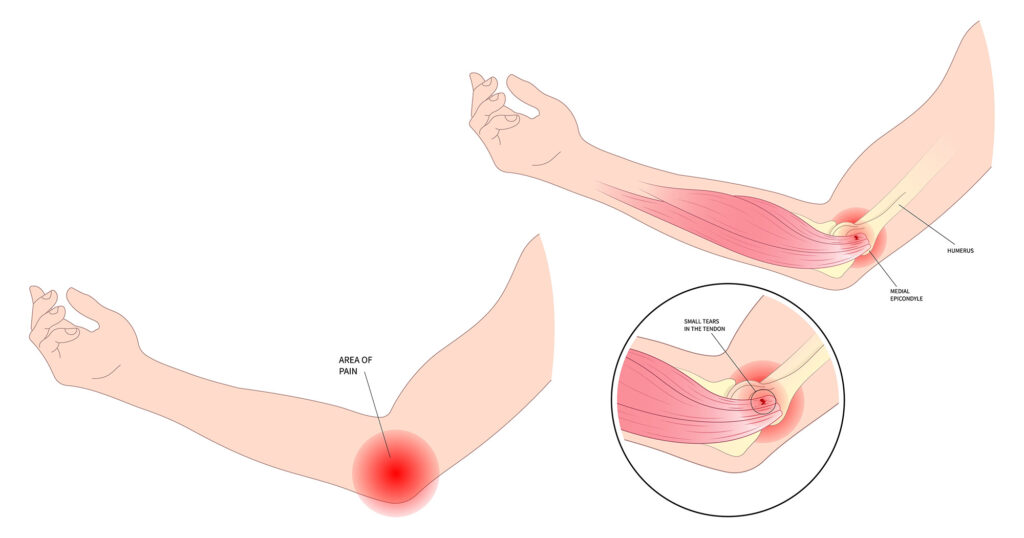
– Contributing Structures: Muscle tension and joint dysfunction in affected areas lead to abnormal strain on tendons and nerves. Poor posture, such as slouching or forward shoulder positions, exacerbates these injuries by overloading specific tissues.
– Treatment with Osteopathy: Osteopaths address RSIs by releasing tension in overworked muscles, realigning joints, and improving postural balance. Treatments include soft tissue manipulation, joint mobilisation, and ergonomic adjustments. This approach reduces inflammation, relieves pain, and restores proper movement patterns, which are essential for long-term relief.
Dr Zac Hakes (Osteopath) and his team offer a comprehensive, holistic approach to managing and preventing sports injuries. By addressing posture, osteopaths improve alignment, correct dysfunctional joints, and restore balance in connective tissues such as muscles, tendons, ligaments, and fascia. This approach optimises biomechanics and helps prevent further injury. Through personalised treatment plans, osteopaths at Riverside Wellness Centre in Ballina work to relieve pain, support healing, and enhance performance for athletes of all levels.